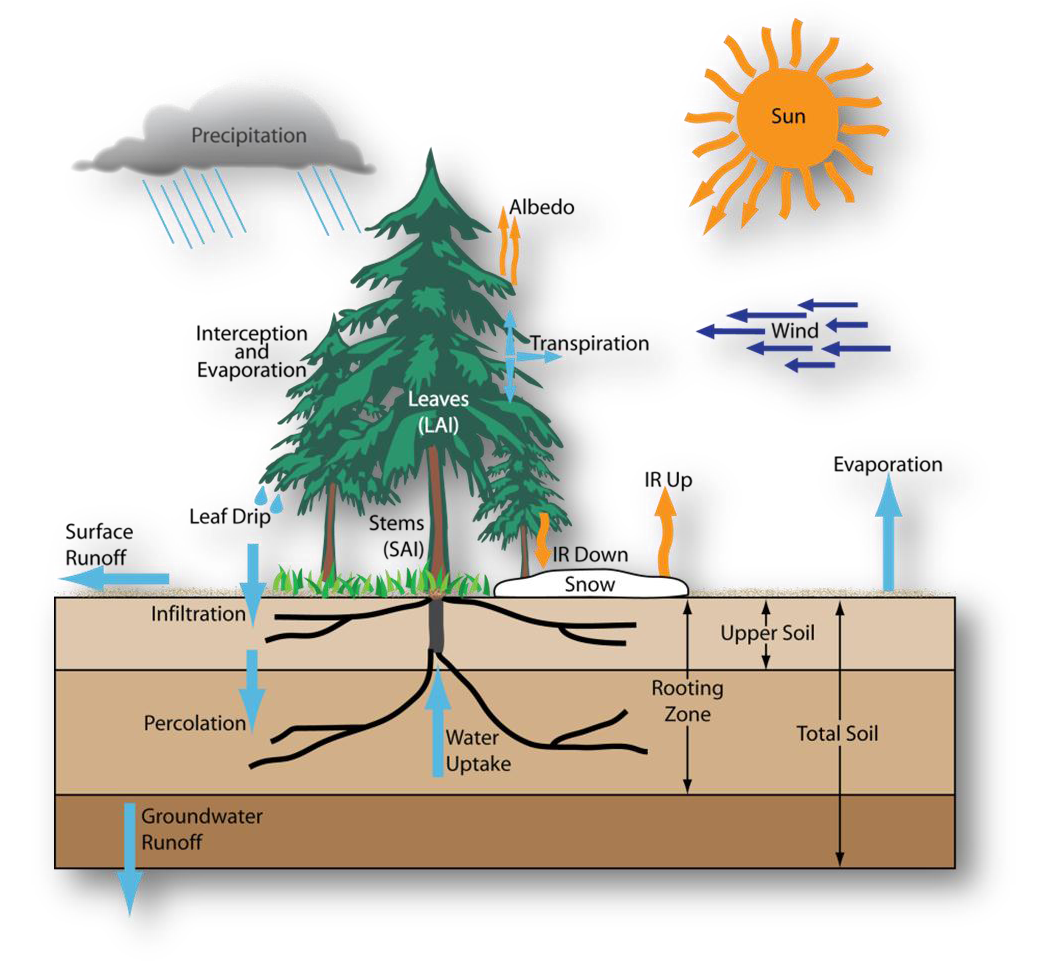Air temperature, precipitation, soil moisture, and evapotranspiration are related through the balance of incoming and outgoing energy, in combination with water at the earth’s surface (see figure below). The incoming energy (directed toward the earth’s surface) is comprised of solar or shortwave radiation from the sun and thermal or longwave radiation from the atmosphere. Longwave radiation is a result of the absorption and re-emission of energy by atmospheric gases, such as carbon dioxide. The outgoing energy (directed away from the earth’s surface) is comprised of longwave radiation and heat that is associated with evaporation (latent heat) and the difference in temperature between the air and the surface (sensible heat). The earth’s water budget is driven by precipitation and evaporation. The incoming component of the water balance is precipitation and the outgoing component is evaporation, where evaporation is the link between the energy and water balances. Some precipitation is lost to evaporation, some runs off and some is stored in the ground; the latter two combine into streamflow. Evapotranspiration is the total amount of moisture that leaves the earth’s surface by way of evaporation from surfaces and transpiration from plants.
Energy and Water Balance Background
Copyright © 2019 Regional and Global Climate

